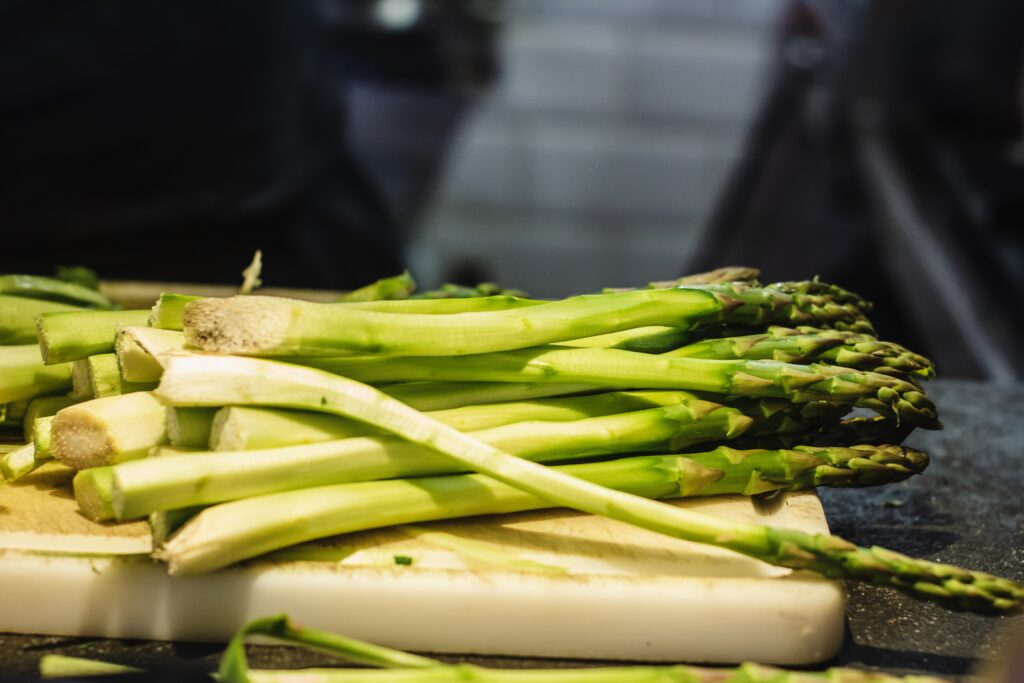Ready to explore the world of seasonal and locally-sourced ingredients? Today, you’re going to discover the common produce often featured in local markets and seasonal dishes. Along the way, you’ll learn how to identify them and enhance your cooking with fresh, home-grown flavors. Let’s start this exciting culinary journey!

This image is property of images.unsplash.com.
Understanding the Concept of Seasonal and Locally-Sourced Ingredients
Seasonal and locally-sourced ingredients are buzzwords in the culinary industry. But what do they really mean? And what are the benefits of incorporating these ingredients into your cooking? Let’s delve into it.
Definition of Seasonal Ingredients
Seasonal ingredients refer to the produce that is ‘in season’ or at its peak point of freshness and flavor during a particular time of year. These are nature’s way of saying that these crops are ready to be harvested and consumed.
Benefits of Using Seasonal Produce
You probably enjoy a ripe, juicy tomato in summer or a hearty squash in the cooler months. This is one of the prime benefits of using seasonal produce – superior taste. Seasonal crops tend to be fresher, tastier, and more nutritious because they are harvested at the peak of their ripeness. Moreover, they are also usually cheaper because of the supply-demand factor.
Definition of Locally-Sourced Ingredients
“Locally-sourced ingredients” denotes produce and products that were grown, raised, or made within a certain proximity of where they’re sold or consumed. These distances can vary, but usually, local means within the same country, state, or sometimes within a certain mile radius from your location.
Advantages of Using Locally-Sourced Ingredients
Opting for locally-sourced ingredients does not just decrease environmental impact, but it also supports local farmers and economies. You get the freshest seasonal produce and often enjoy a wider variety than what you’d find at a supermarket, leading to more diverse and flavorful meals. Plus, you’ll gain knowledge about how your food was grown and where it came from.
Commonly Featured Seasonal Ingredients
Different seasons bring different produce to the table. Let’s look at what common seasonal ingredients include.
Seasonal Vegetables and Their Uses
Be it spring asparagus or winter Brussels sprouts, cooking with the seasons gives you a rotating palette of flavors to play with. In addition, using seasonal vegetables encourages creative cooking techniques and adds variety to your dietary intake.
Seasonal Fruits and Their Applications
From juicy summer peaches to autumnal apples, seasonal fruits are varied and vibrant. Their bright colors, individual textures, and fresh flavors can uplift any dish, either served raw or as add-ins to desserts or cocktails.
Highlighting Seasonal Herbs and Spices
Like fruits and vegetables, herbs such as basil, cilantro, and spices like peppers also have their seasons. Incorporating these seasonal herbs and spices can change the flavor profile of your dishes considerably, creating depth and complexity.
Seafood and Meats According to Season
Seafood, too, changes with the tides. Certain fish and shellfish are thriving in different seasons, mainly depending upon their breeding cycles. Likewise, hunting seasons impact the availability of game meats.

This image is property of images.unsplash.com.
Significance of Preserving Seasonal Ingredients
When we’re in the thick of a ripe season, it’s easy to forget that the bounty won’t last forever. This is where preserving comes into play.
Canning and Preserving Seasonal Fruits
Canning, drying, or making preserves or jams are excellent ways to savor your favorite fruits year-round. Imagine enjoying homemade strawberry jam in the heart of winter!
Preserving Vegetables in Different Seasons
Like fruits, vegetables can also be canned, dried, or pickled. Preserved tomatoes, beans, cucumbers (pickles), or beets are versatile pantry staples that can be used in a variety of recipes.
Frozen vs Fresh – The Better Choice
While fresh is typically best for taste and nutrition, frozen can be a good option. If done properly, freezing can preserve the nutrients in fruits and vegetables. And it can be convenient for those out-of-season cravings.
Commonly Featured Locally-Sourced Ingredients
Local harvest varies by region. Let’s explore some commonly featured local ingredients.
Locally-Sourced Vegetables and Their Uses
Whether it’s fresh salad greens or root vegetables, locally-sourced vegetables are a treat for your taste buds. Not to mention more sustainable, as buying local reduces transportation emissions.
Locally-Sourced Fruits and Their Applications
Many fruits like apples, oranges, berries, grapes, or numerous tropical varieties may be available from local sources, depending on your location. They can be enjoyed on their own, in salads or desserts, or be turned into a wide array of preserves.
Highlighting Locally-Sourced Dairy and Meats
Local farmers often offer sustainably raised meats and dairy products. They are usually fresher and provide a unique flavor experience in comparison to commercially raised animals.
Seafood from Local Waters
Seafood lovers can savour the freshest produce from nearby waters, exploring the variety of tastes offered by local seas, rivers, and lakes.

This image is property of images.unsplash.com.
Importance of Locally-Sourced Ingredients in Cuisine
Locally-sourced ingredients play a vital role in cuisine, both traditional as well as contemporary.
Influence on Traditional Food Recipes
Traditional recipes often originate from whatever ingredients are available locally, shaping the unique culinary heritage of a region.
Significance in Contemporary Cuisine
In contemporary cuisine, locally-sourced ingredients often stand for freshness, quality, and ethical considerations, enhancing the overall dining experience.
Challenges in Using Locally-Sourced and Seasonal Ingredients
While the benefits are clear, using locally-sourced and seasonal ingredients also presents challenges.
Balancing Local Demand and Supply
At times, local demand can surpass supply, triggered by factors such as weather-related issues or small capacity of local farmers.
Managing Cost and Pricing
Locally-sourced ingredients might be pricier than mass-produced alternatives. Businesses have to balance costings, pricing, and, ultimately, profitability.
Issues Related to Quality and Freshness
Quality and freshness of the produce can be challenging, especially in urban settings and off-season.
Solving Supply Chain Issues for Local Ingredients
To overcome these challenges, some strategies can be implemented.
Direct Purchases from Farmers
Purchasing directly from farms guarantees freshness and establishes a relationship between farmer and consumer.
Implementing Community Supported Agriculture (CSA)
CSAs allow individuals to purchase shares of a farm’s harvest upfront. This not only provides consumers with fresh, seasonal produce but also gives farmers a source of income in advance.
The Environmental Impact of Using Local and Seasonal Produce
Choosing local, in-season food doesn’t just translate into yummy meals – it also comes with significant environmental benefits.
Reducing Food Miles and Carbon Footprint
The less distance food has to travel from farm to plate, the lesser are the emissions produced from the transportation. This, in turn, reduces your carbon footprint.
Supporting Sustainable Farming Practices
Local farmers often practice sustainable farming methods. Supporting them means more organic, non-GMO, and responsibly harvested food entering the marketplace.
Conservation of Biodiversity
Local and seasonal farming encourages the growth of a variety of crops, promoting the conservation of biodiversity.
Conclusion: Advocating for Locally-Sourced and Seasonal Food
Choosing local and seasonal ingredients isn’t just a culinary trend – it’s an opportunity to make more sustainable, health-conscious, and community-oriented food choices. So, next time you go shopping, think about not just what you want to eat, but how your food choices can impact your health, your local economy, and your planet.










